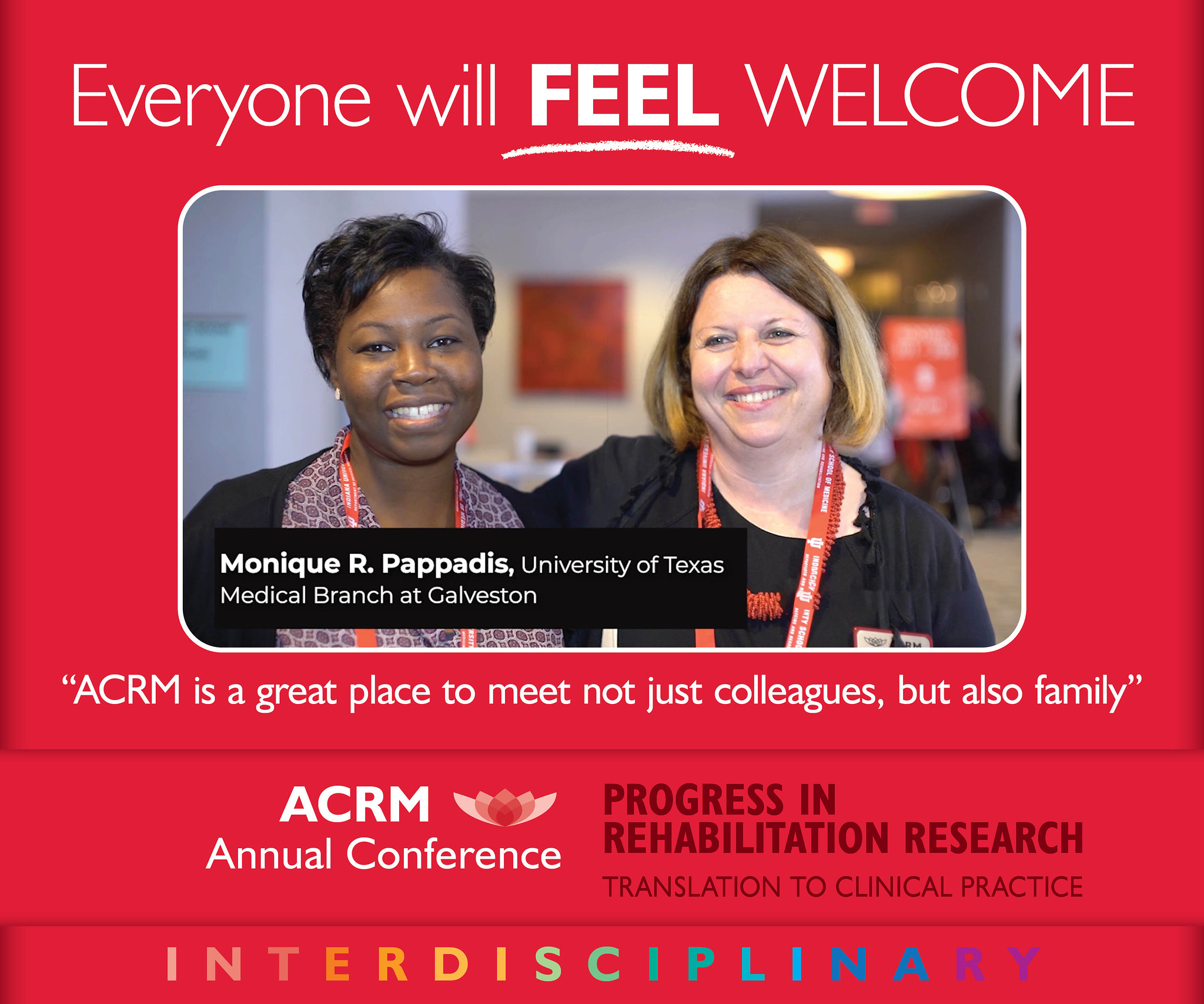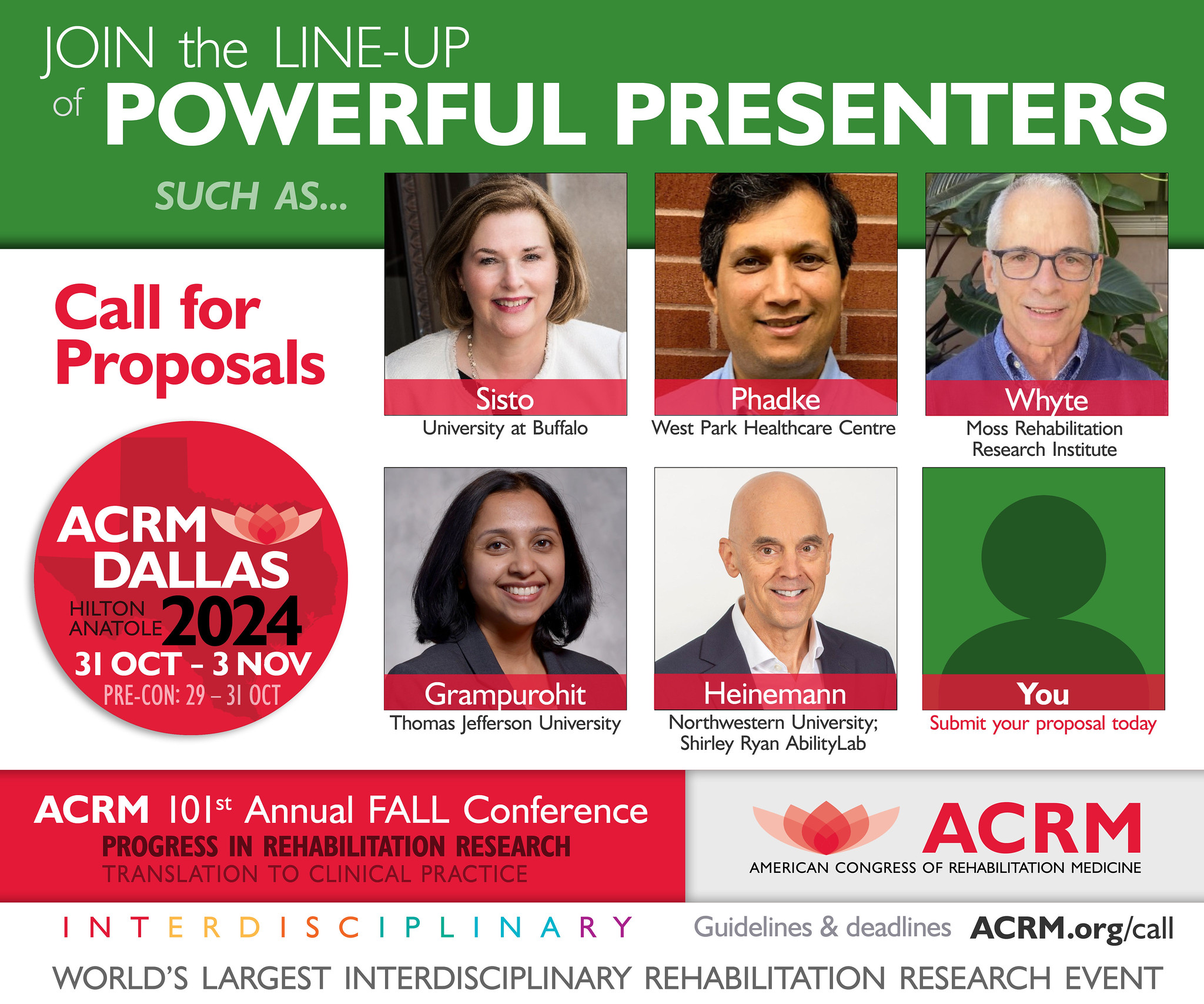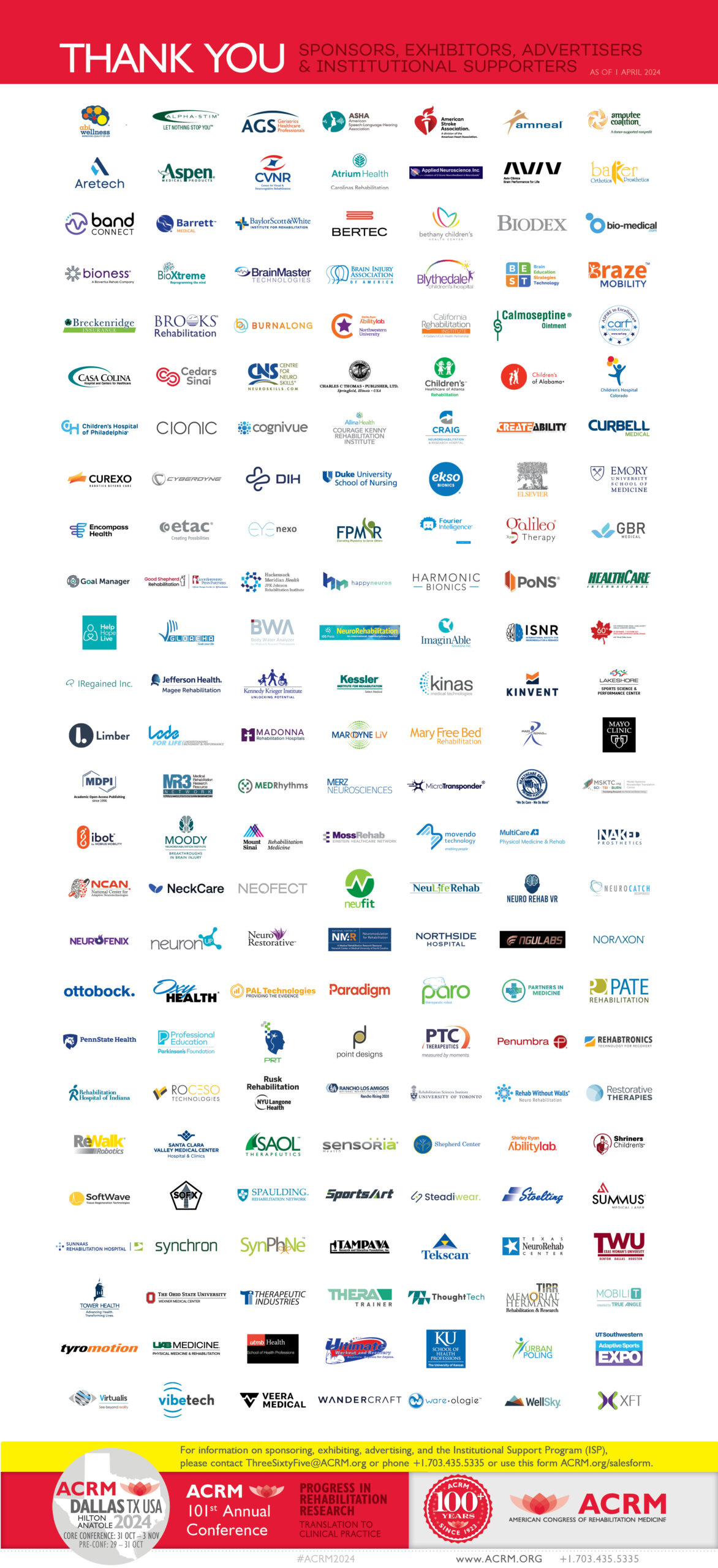Supporting Early Career Involvement at Annual Conference

Shannon Juengst
In my role as the BI-ISIG Early Career Officer, I often consider what responsibility the BI-ISIG—and more broadly, ACRM—has in supporting and sponsoring participation of its Early Career and Student/Resident/Fellow members. The BI-ISIG expressly addresses this support and sponsorship in its vision cast and considers it a high priority. This commitment is evidenced by the Travel Scholarships to ACRM Annual Meetings, the requirement to include Early Career members in any Task Force grant request, and the Early Career poster awards recognizing excellent research. Yet the latter two forms of support require that individuals are already participating actively in BI-ISIG Task Forces, and the poster award is obviously contingent on attending the Annual Meeting and presenting a poster. How, then, do students and other trainees get involved in the first place? And is there more that the BI-ISIG, and ACRM as an organization, can do to attract and support the next generation of rehabilitation clinicians and researchers?
I brought six graduate students with me to the ACRM Annual Conference this year. I leveraged every discount offered by ACRM – a modestly discounted core registration for students, the presenter discount (they all presented posters), and the early-bird registration. I used grant funding, which I am fortunate to have as an early career professional myself, to cover flights for four students presenting grant-related research. The students covered their own hotel costs and additional expenses (which ranged from $500-$1200 out of pocket, even though the students used hotel points donated by generous parents, shared rooms, and stayed at hotels several blocks away). That still left over $2,000 in registration costs alone, so I had to find the funds or deny my students the opportunity to attend and present their work. Because I am a junior faculty member starting up a new research program with limited resources, my students have been the lifeblood of my research, contributing countless hours (usually unpaid) to build the research foundation necessary to even consider requesting external funding. How could I not do all that I could to help them present the research that they had worked so hard to build? So, I used the only other resource available to me at this early stage in my career – my professional startup funds.
Startup funds are allocated to new faculty to cover expenses necessary for developing and launching a research program that will generate external funding (e.g. research grants). In the all too familiar struggle of too much to do and never enough money to do it, startup funds are often closely guarded and meted out only after carefully contemplating the potential return on investment. In this case, there was no contemplation necessary, no struggle to make a decision. I cannot think of anything that has advanced my own research further, faster, and in more innovative ways than working with students and other trainees. I had already invested in them, with immeasurable return on that investment. Why would I stop now?
Our responsibility, however, goes beyond just paying back students for their contributions to our work. We have a responsibility to our field and to our respective professions to invest in the broader future of rehabilitation research and clinical care. We need to cultivate the next generation, not just by advising and teaching, but by creating opportunities for development, networking, and advancement. In the rehabilitation field, there is no better place for that than ACRM.
But the responsibility for sponsoring ACRM’s Student/Resident/Fellow members should not fall to other early career members who already struggle to support their own development and participation. Admittedly, bringing six students may be an outlying example, but it also reflects my belief that early involvement in this organization can have immense mutual benefit, for the organization as a whole and for trainee members. We, as a professional organization, have expressed our commitment to sponsoring our junior members; now, we need to back up that commitment with sustainable solutions.
For example, ACRM could adopt more broadly some of the programs implemented by the BI-ISIG to support and sponsor its junior members. Though travel awards may not be feasible at an organizational level, ACRM could offer competitive awards for trainees that included waiving the conference registration fee and covering hotel room costs for a portion of the conference stay. The organization already offers these incentives to community groups to bring in non-ACRM members as speakers, with the hope of enticing these individuals to become ACRM members in the future. I contend that investing in early career professionals still in training will produce a higher membership yield. ACRM could offer trainees a waiver of conference registration fees in exchange for volunteer hours at the conference, a model that has proven successful in other professional organizations.
Additionally, though students/residents/fellows can take advantage of a significantly reduced membership cost, the conference registration fee is still prohibitive for many at this stage of training. Offering them a more substantially reduced conference registration fee, as other professional organizations do, would also make the conference more accessible to them. Another solution would be to sponsor one trainee member from each of the ACRM community groups to attend the annual meeting each year. This would stimulate their interest and participation in ACRM community groups.
We should also consider how to best structure the annual meeting itself to maximize the return on investment for trainees, their mentors, and ACRM as an organization. Students presenting a poster or oral paper with no audience – sadly, something that occurs far too often – does not benefit anyone, and could potentially sour that trainee (and their mentor) from participating in future meetings. Getting a commitment from more senior members to attend trainee presentations – perhaps at the community group level – is a potentially effective solution, but would only be possible if the program scheduling left time for more established members to devote to supporting trainees.
Through these concrete solutions, ACRM would support trainees and share the responsibility of sponsorship with its members. Perhaps not all of these solutions will prove feasible. We may need to come up with other creative solutions. But first, we have to start the conversation.









